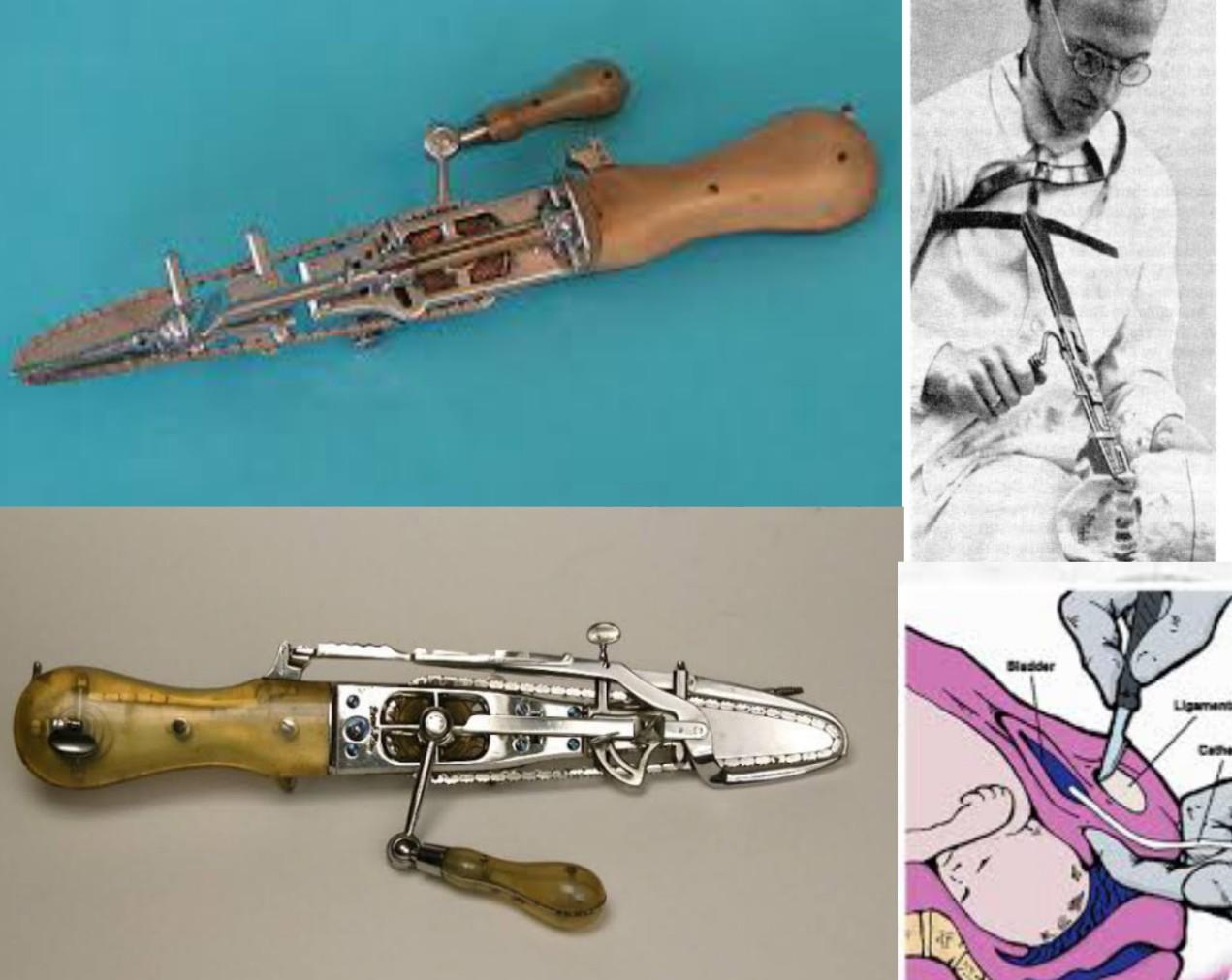When most people hear the word “chainsaw,” what immediately comes to their minds is probably lumberjacks chopping wood or horror movies because in recent times, chain saw has been used reduce humans to fodder.
Although, chainsaws make it easy to cut trees into logs, they were not originally made for chopping wood. These monstrous devices were actually invented for bringing babies safely, yes safely, into the world. Before the common use of the caesarian section, all babies had to be passed through the birth canal. However, as we know, babies can become obstructed in there if they are breech or too large.
When babies couldn’t fit through or they would get stuck in the pelvis, parts of bone and cartilage were removed to create more space for the baby. The procedure, which was known as a “symphysiotomy,” was originally performed by hand using a small knife and saw to remove the bone. And to make things worse, this was all done without anesthesia to a woman in the middle of giving birth. It took a long time and it was messy and obviously painful.
However, in the 1780s, in a bid to make the removal of the pelvic bone easier and less time-consuming, two doctors named John Aitken and James Jeffray invented the chainsaw as a more precise and humane option to widen the pelvic.
The procedure involves slicing through the cartilage and ligaments of a pelvic joint (or in extreme cases, called pubiotomy, sawing through the bone of the pelvis itself) to widen it and allow a baby to be delivered unobstructed.
The procedure carried the risk of urethral and bladder injury, infection, pain, and long-term walking difficulty. Symphysiotomies became a routine surgical procedure for pregnant women experiencing an obstructed labor from 1597.
It lasted through 18th century and much of the 19th century as part of a surgical toolbox until C-sections grew in popularity. They became less frequent in the late 20th century after the risk of maternal death from caesarean section decreased (due to improvement in techniques, hygiene, and clinical practice). It is estimated that 1,500 women unknowingly and without consent underwent symphysiotomies during childbirth in the Republic of Ireland between 1944 and 1987.
It looked like a modern-day kitchen knife with little teeth on a chain that wound in an oval. The tool was a success and it continued to be used for most of the 19th century. It was even used for other bone cutting operations and amputations during surgery until medical advances saw it phased out. It then evolved into a wood chopping tool when people realized how quickly and easily it was to get through, well, anything.
In 2002, Survivor Matilda Behan and her daughter, Bernadette, set up an advocacy group for the victims called Survivors of Symphysiotomy (SoS). The group recently submitted a document to the United Nations Committee Against Torture. In the 50-page document, some of the 300 survivors recount their personal experiences of the childbirth operation which has been described as barbaric and cruel.
For all its discomfiting history, at least the chainsaw proved to be useful—which isn’t something that can be said for all inventions purporting to aid in childbirth. In 1965, George and Charlotte Blonsky patented a device that acted as a human turntable, spinning so quickly it might induce the patient (or victim) into delivering their baby via centrifugal force.
In the 20th century, the principle was commandeered for less disturbing purposes like logging, with two-person saws weighing more than 100 pounds each. By the 1950s, those gave way to lighter models.






